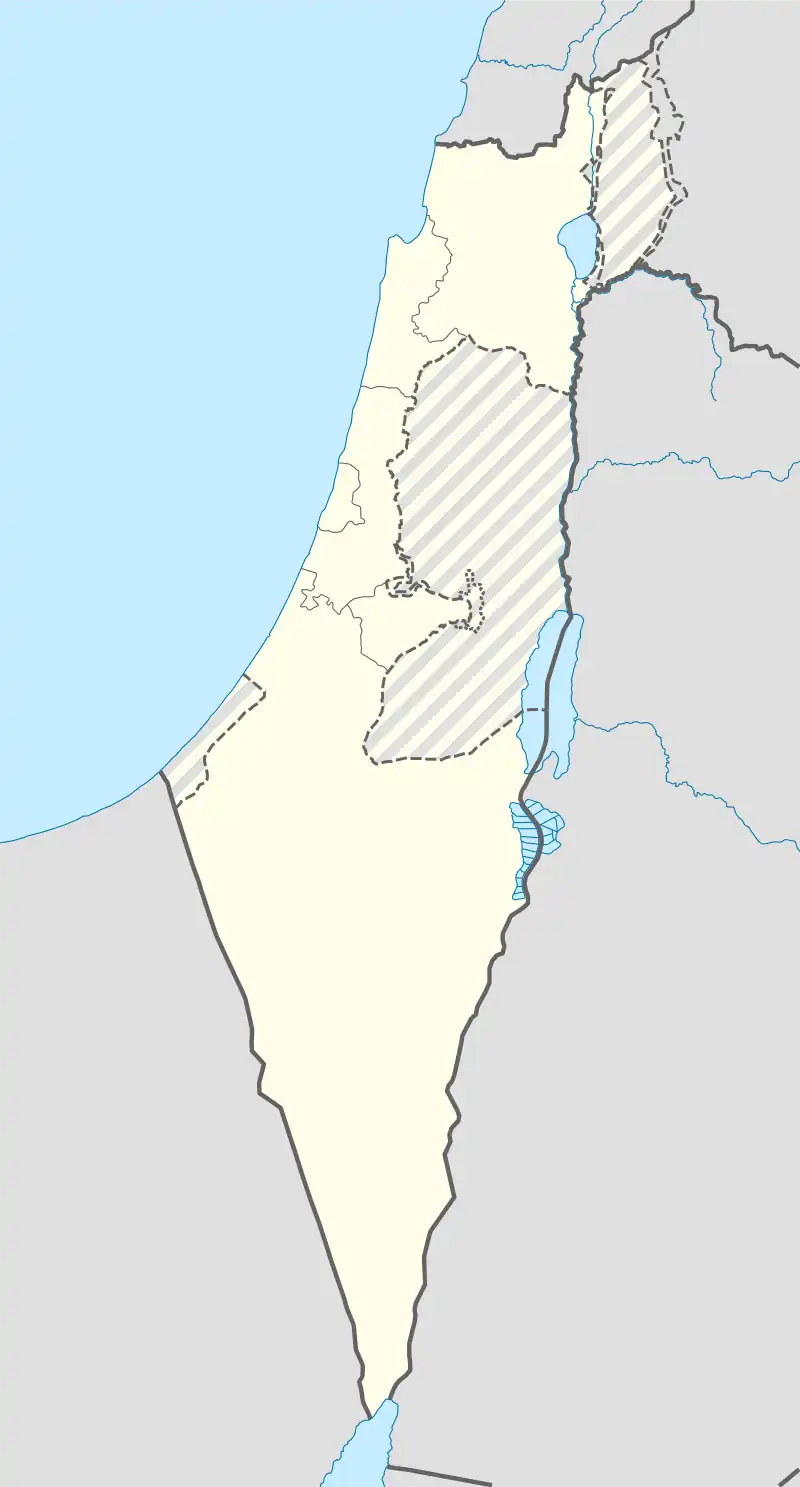Beit Arif
בֵּית עָרִיף بيت عريف | |
|---|---|
| Etymology: House of Cloud | |
 Beit Arif  Beit Arif | |
| Coordinates: 31°59′41″N 34°56′0″E / 31.99472°N 34.93333°E | |
| Country | |
| District | Central |
| Council | Hevel Modi'in |
| Affiliation | Moshavim Movement |
| Founded | 1949 |
| Founded by | Bulgarian Jews |
| Population (2021)[1] | 1,202 |
Beit Arif (Hebrew: בֵּית עָרִיף, lit. House of Cloud) is a moshav in central Israel. Located near Shoham, it falls under the jurisdiction of Hevel Modi'in Regional Council. In 2021 it had a population of 1,202.[1]
History
During the 18th and 19th centuries, Beit Arif was the site of the village of Dayr Tarif. It belonged to the Nahiyeh (sub-district) of Lod that encompassed the area of the present-day city of Modi'in-Maccabim-Re'ut in the south to the present-day city of El'ad in the north, and from the foothills in the east, through the Lod Valley to the outskirts of Jaffa in the west. This area was home to thousands of inhabitants in about 20 villages, who had at their disposal tens of thousands of hectares of prime agricultural land.[2]
The moshav was founded in 1949 by immigrants from Bulgaria on the ruins of the depopulated Palestinian village of Dayr Tarif (the Romans referred to Dayr Tarif as Bethariph).[3][4] It was originally named Ahlama (Hebrew: אחלמה) (Exodus 28:19), after one of the twelve stones in the Hoshen, the sacred breastplate worn by a Jewish high priest. Four other nearby settlements, Bareket, Shoham, Leshem and Nofekh, are also named after such stones.
In the early 1950s some Jewish refugees from Yemen and Aden arrived in the area, and built homes about half a kilometre away. After disagreements between the two groups, the original residents left and moved to Ginaton (a moshav also founded by Bulgarian-Jewish immigrants) in 1953.[5]
References
- 1 2 "Regional Statistics". Israel Central Bureau of Statistics. Retrieved 22 February 2023.
- ↑ Marom, Roy (2022). "Lydda Sub-District: Lydda and its countryside during the Ottoman period". Diospolis - City of God: Journal of the History, Archaeology and Heritage of Lod. 8: 103–136.
- ↑ Khalidi, Walid (1992). All That Remains: The Palestinian Villages Occupied and Depopulated by Israel in 1948. Washington D.C.: Institute for Palestine Studies. p. 379. ISBN 0-88728-224-5.
- ↑ Carta's Official Guide to Israel and Complete Gazetteer to all Sites in the Holy Land. (3rd edition 1993) Jerusalem, Carta, p. 108, ISBN 965-220-186-3 (English)
- ↑ Place Names in Israel. A Compendium of Place Names in Israel compiled from various sources, Israel Prime Minister’s Office. The Israeli Program for Scientific Translations 1962, pp27–28